The last time I wrote about a precious Prohibition resource shutting down, it had a happy ending. Let’s hope this one follows a similar path.
A couple of weeks ago, Beam Suntory, owners of Canadian Club Whisky, announced that the Canadian Club Heritage Center would cease operating public tours effective at the end of March. This is a big blow to the tourism industry in Windsor, and a hit to the hopes of history nerds like me. As of now, it’s unclear what will happen to the archives there (muted sob) or to the furnishings and antiques in the 1894 building.
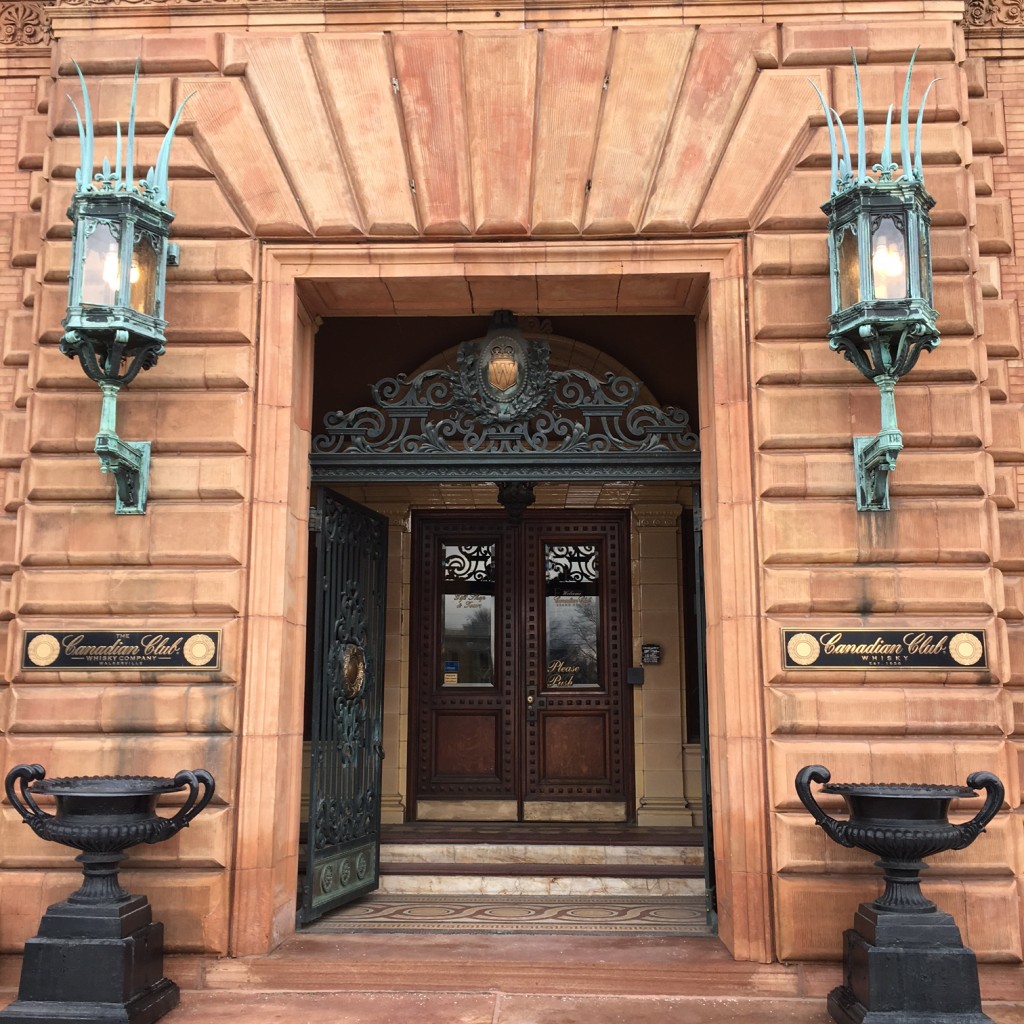
Hiram Walker’s story mirrors that of many mid- to late-19th century Detroiters. In fact, he had much in common with men like James Vernor and Bernhard Stroh, the Beverage Kings of Detroit.* Walker was born in Douglas, Massachusetts in 1816 on the Fourth of July and moved west when he was 22, ten years before Stroh arrived. Like Vernor after him, Walker was a grocery clerk in both Boston and Detroit. His first gig here was at a grocer on Atwater, but he soon set up his own store down the street at Atwater and Bates (in case you’re wondering what’s there now, it’s the Renaissance Center parking garage). Despite the unparalleled location, Walker’s first grocery folded, probably due to lack of savings. In those days, vendors had to pay out massive amounts to acquire stock, and they had to sell quickly to turn a profit.
After his first failed effort, Hiram became more cautious. He entered a partnership with Nehemiah Ingersoll, an established leather and dry goods trader. Walker’s bad luck wasn’t over yet, though: the building burned down and Walker was out on his own again by 1850. This venture was, finally, a success.
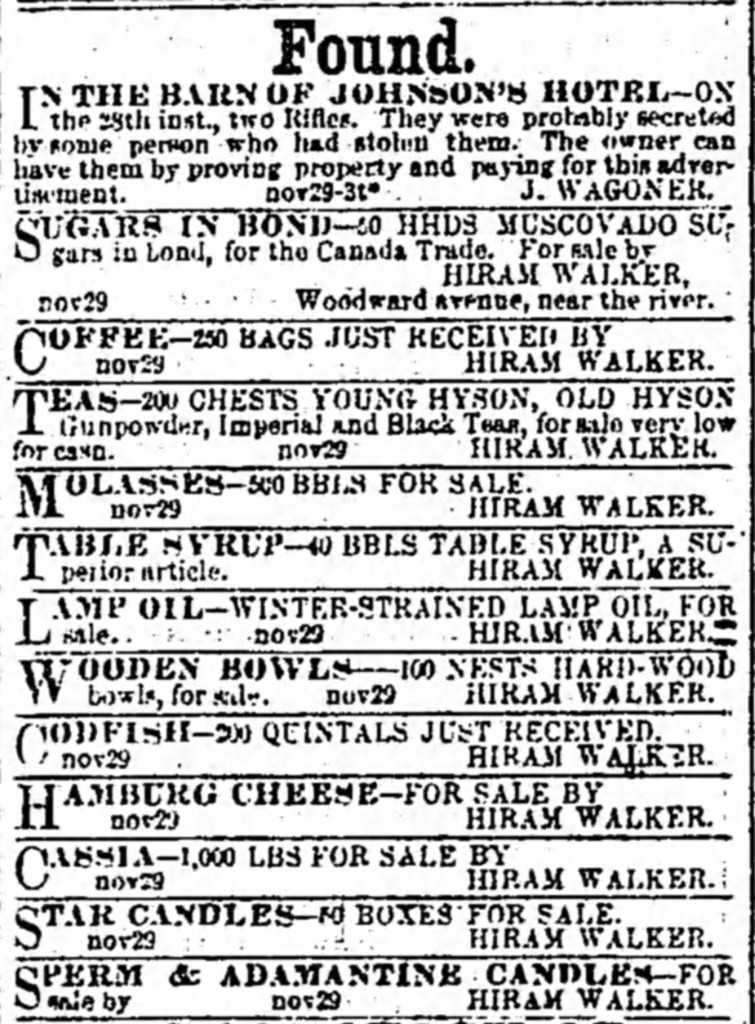
Around that time, too, Walker began making his own vinegar. This is important to the distilling behemoth that his company later became, since quality vinegar is distilled, just like whisky. Walker also was smart enough this time to diversify. in 1857, he had enough saved up to open his own distillery. Although he’d originally planned to host it in Detroit, an 1855 Michigan law that severely restricted the sale of alcohol changed his mind. Technically at least, only druggists were permitted to sell alcohol to the public. As part of the so-called “Maine Laws”, Michigan was at least technically dry during much of the mid-nineteenth century. This fact, along with the cheap availability of land on the south side of the river, led Walker to decide to move shop to Canada. In 1857, he laid down $40,000 to purchase land in Canada and Windsor along with a flour mill.
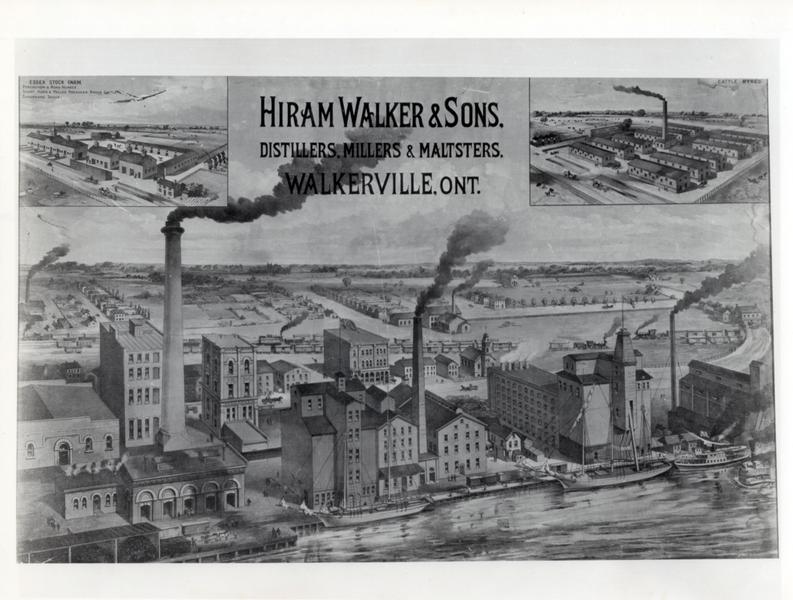
Business clipped along on both sides of the river, and in 1858 Walker moved his wife and children (he had seven in all) to “The Cottage” on the Canadian side. But they didn’t stay long; Walker, it appears, was a Detroiter at heart, and in 1864 they built a home at the corner of Fort and Shelby streets–a historic corner, having once held the British and American forts of old Detroit. He also built a summer home on Peche Island that cost $500,000 (yes, that is in 1864 dollars). Walker would remain a Detroit resident for the rest of his life, at first commuting an hour and a half daily from his home to the rapidly growing distillery.
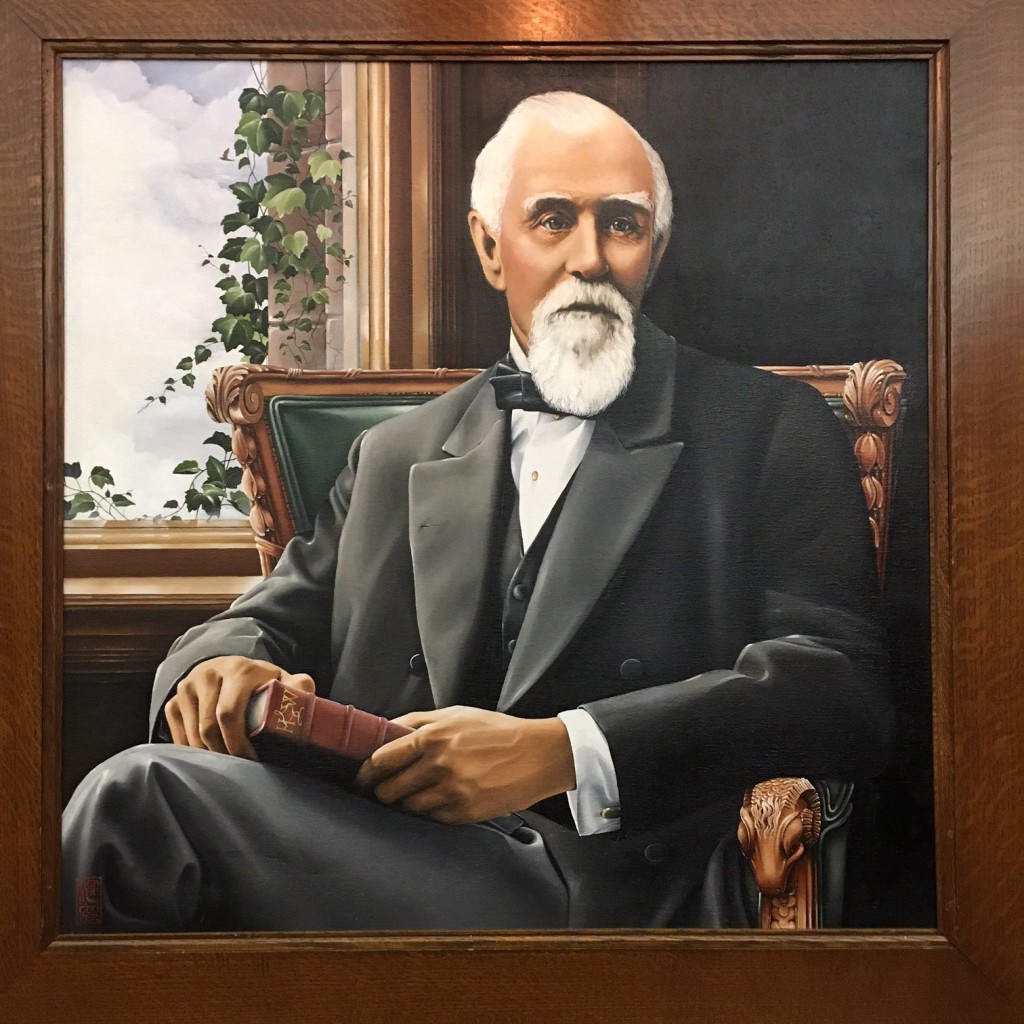
Annoyed by the waste of his time, Walker decided that what he needed was more efficiency. All of the efficiency. You see, when I said Walker diversified, I meant it. He built himself a town from scratch to house his distillery, mill, and later on his very own ferry and railroad. Walkerville was a company town through and through. And Hiram loomed over all: in the words of a contemporary, Walker was “a unique municipal figure, being practically the mayor, common council, board of public works, fire department, lighting and water works manager, et cetera.” The town was named Walkerville officially in 1869, and by 1882 held over 600 full-time residents, a church, and a school. By 1875 the whole town had electric street lights, a water system and a fire department, all funded (and, of course, helmed) by Hiram Walker.
All this from, for the most part, whisky. Walker’s Club Whisky officially started production in 1858. Now, if you’ve ever had Canadian Club, you might note that it doesn’t seem at first the sort of divine nectar to build a vast empire from. So how did Hiram go from failed grocer to Whisky Wizard in a few short years? Timing, certainly. But I like to think that Hiram Walker had a brilliant flair for marketing. Long before the phrases “vertical integration” and “branded advertising” were buzzwords, Walker intuited what would make customers seek out his whisky.
Take our first example: Walker was one of the very first to turn a perennial problem for distillers into a money-making scheme. Whisky at the time was normally sold by the barrel and slopped into bottles willy-nilly at the point of sale. Walker realized that establishing the authenticity of his brand would grant him a foot up in the crowded market. So in 1865 Hiram Walker was the first distiller to put whisky into individually sealed and labeled bottles: mostly tamper proof, and the customer would know exactly what he was getting when he purchased a sealed bottle of Club Whisky. Walker knew what he was doing, too; of his plan, he wrote, “we will make a fine whisky and we do not wish it to be confused with inferior products. We will also brand each barrel, so that discriminating patrons can trust its quality.”
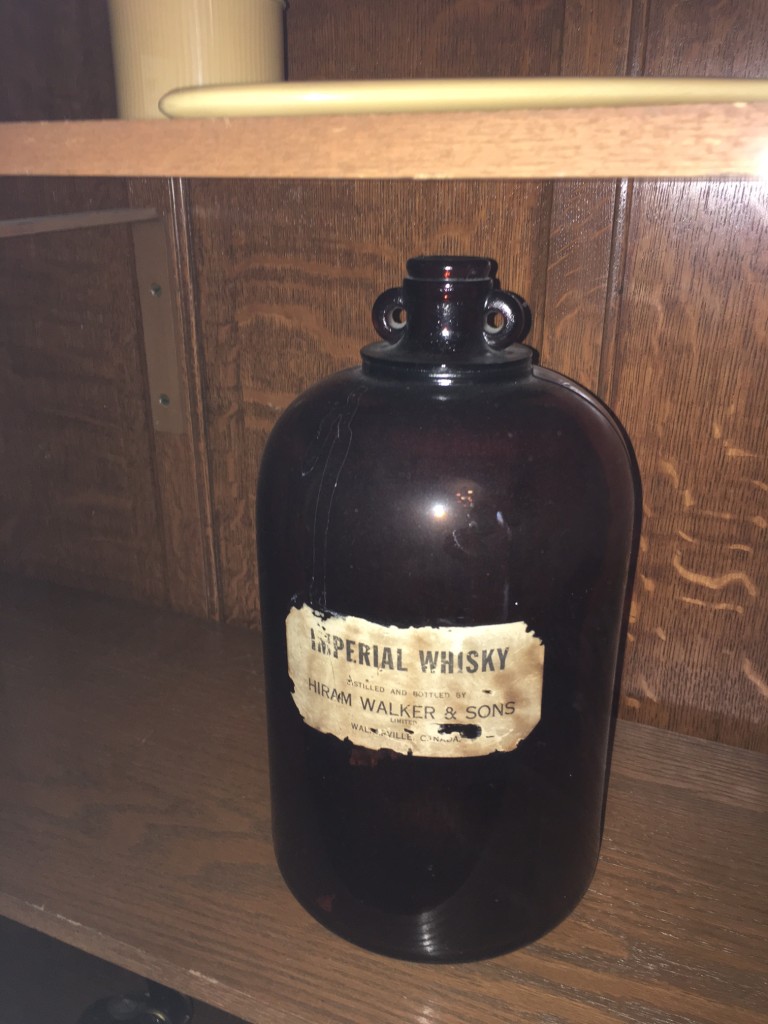
This, of course, pissed off the competitors something fierce. So, being the intrepid American distillers they were, they did the obvious. What? No, they didn’t start insuring their own quality, at least not at first. After all, bottling, labeling and sealing were damn expensive in Civil War-era America. Instead, they went crying to the government and petitioned Congress. Claiming that Walker’s product misled consumers into thinking it was a superior and therefore by association American-made whisky, the distillers of America convinced the government to require that all products sold in the States bear the country of origin prominently. Thus, in 1880, Club Whisky became Canadian Club Whisky.
Far from sullying Walker’s whisky’s image, the new label added a foreign flair to the product and Walker’s success compounded. Now it was exotic–an imported brand! Canadian Club was America’s newest glamorous whisky, with a cachet of authenticity and quality. It would take American distillers more than a dozen years to catch up, and by then Canadian Club had sealed its reputation–and its profits.
Next Up: In Part Two, we’ll continue our investigation into the marketing genius that was Hiram Walker. We’ll find out about the ferry service that delighted generations of Detroiters, about Walker’s bold “I’m not having any of your fake Canadian whisky” poster campaign, about the booze that fueled Prohibition, and about a pregnant cow named The Rose of Aberdeen that influenced American Law for a century and counting.
*Beverage Kings of Detroit: I just made that up, but now I have a great mental image of Walker, Stroh and Vernor hanging out together and comparing majestic facial hair.
[…] the last post, I covered Hiram Walker’s bootstrapping origins and the founding of a whisky dynasty. So what […]